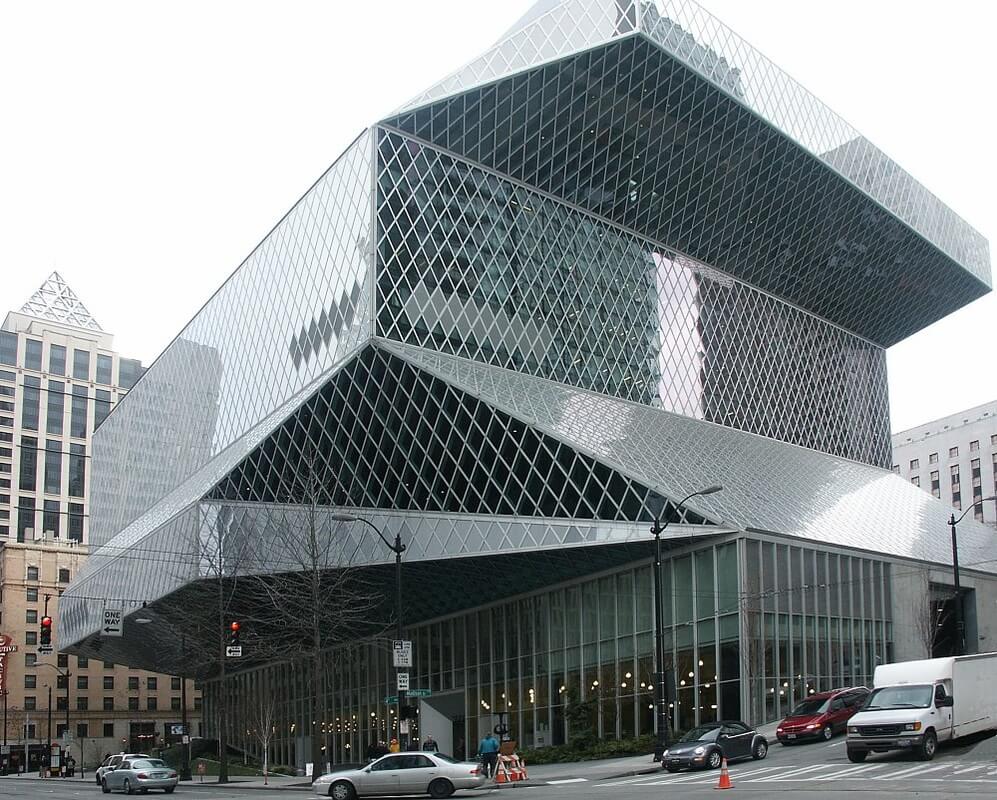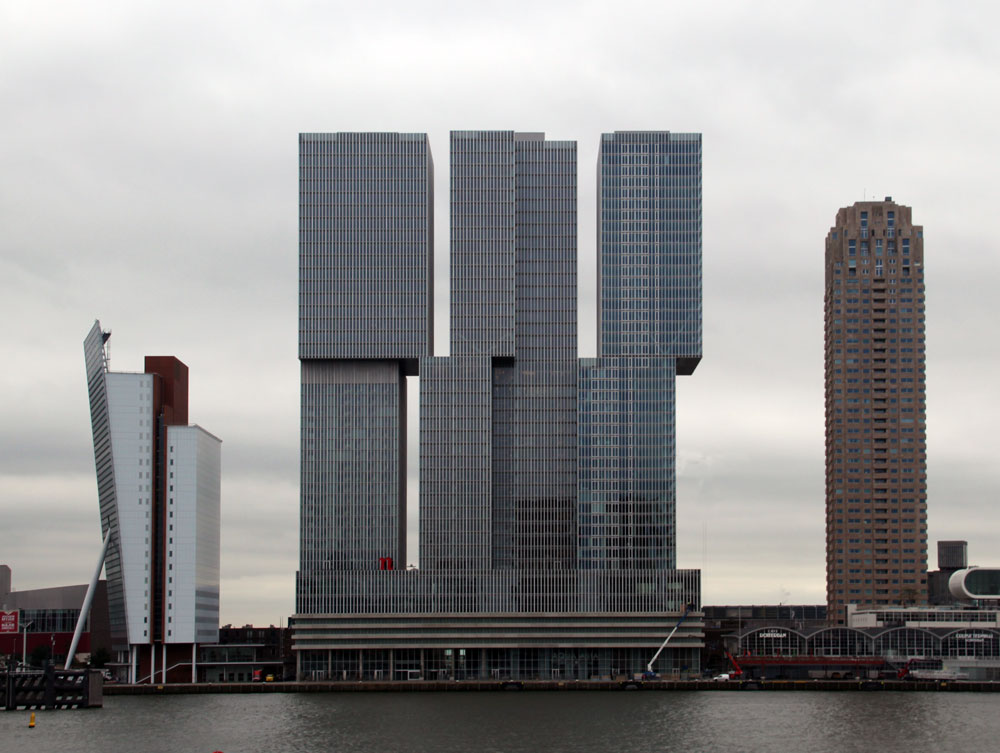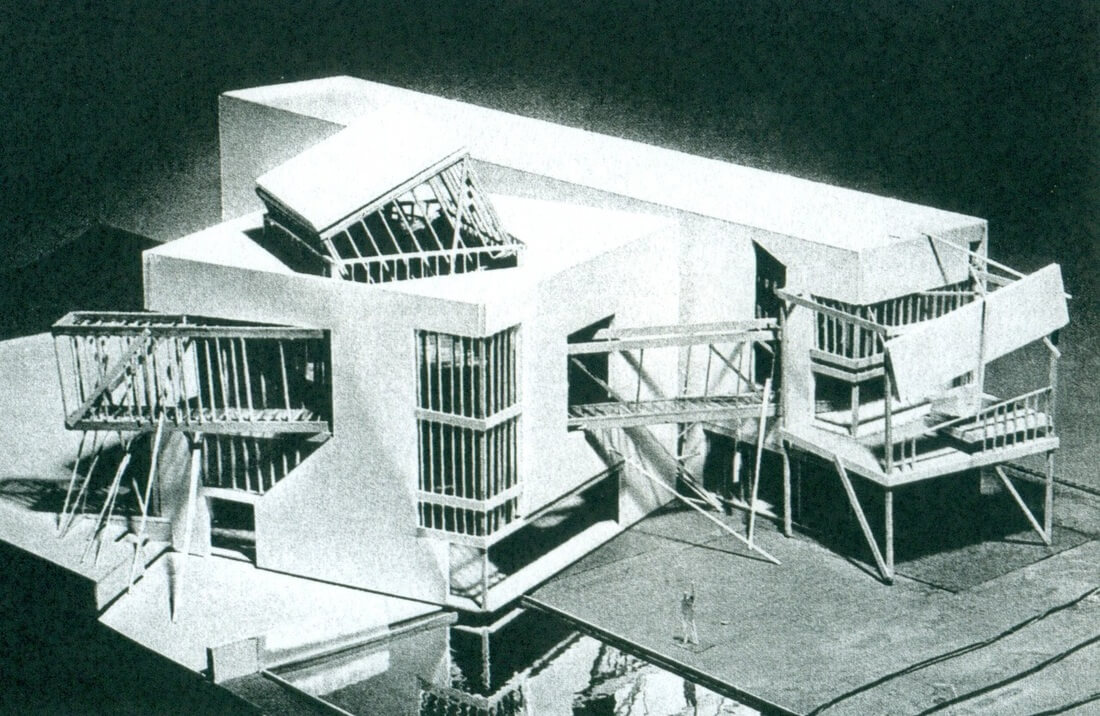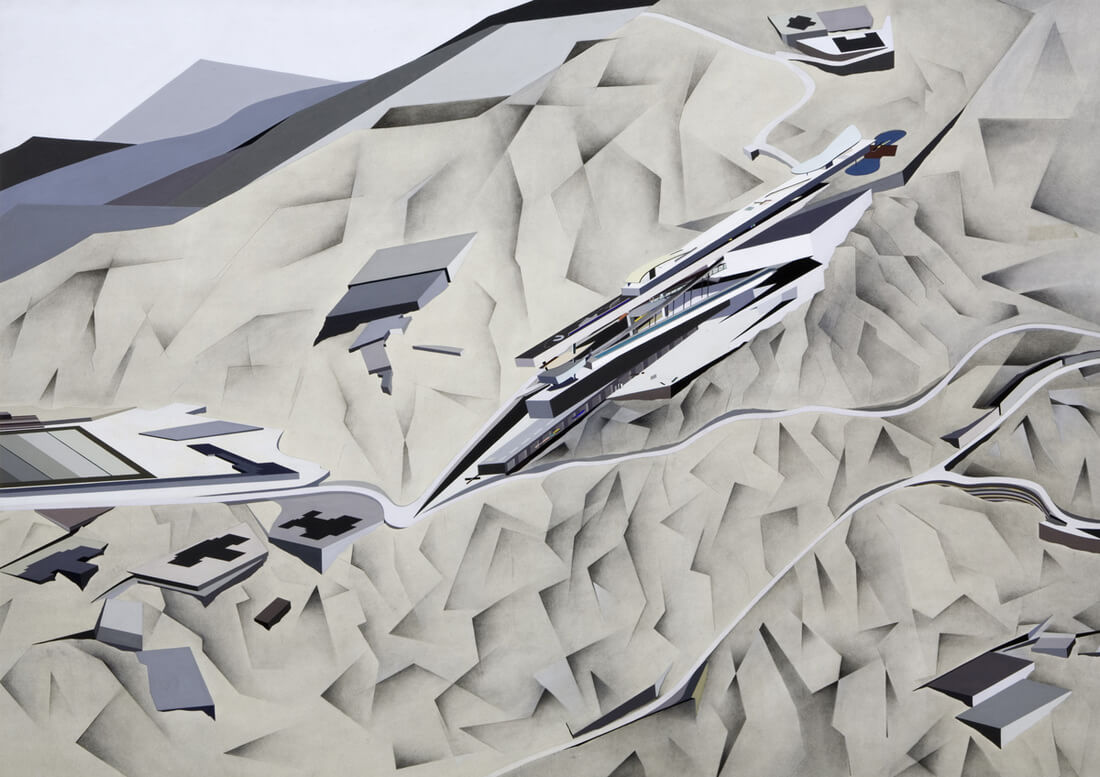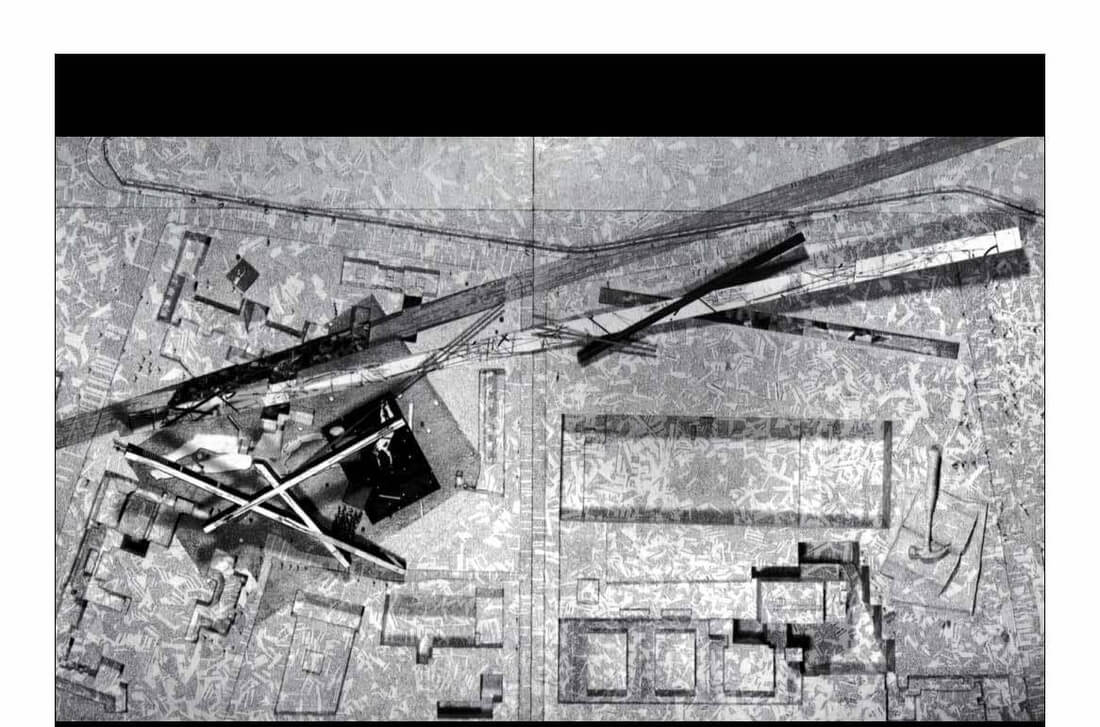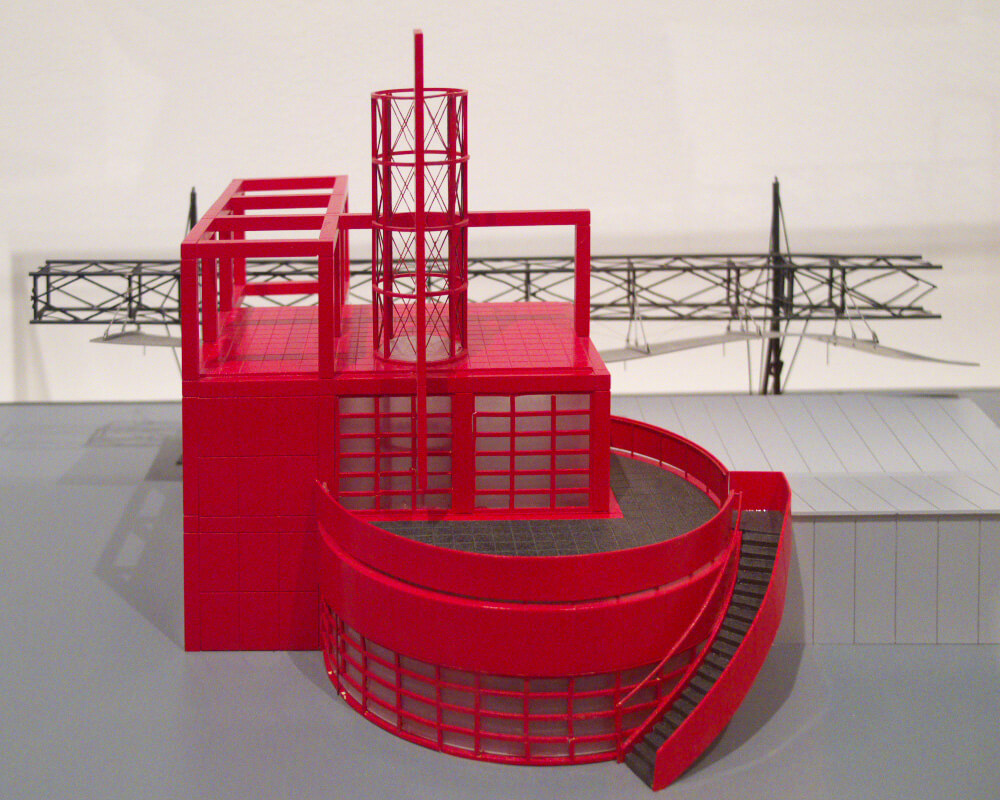When Philip Johnson, Director of the Department of Architecture and Design at MoMA decided to curate an exhibition on new architecture in 1988, he sought to examine current developments and called it Deconstructivist Architecture, a name that came to embody the directions conceived by the seven selected architects: Coop Himmelblau, Peter Eisenman, Frank Gehry, Zaha M. Hadld, Rem Koolhaas, Daniel Libeskind, and Bernard Tschumi. Their projects, he suggested, came to violate the cubes and right angles in the favor of diagonals, arcs, and warped planes. In fact, he believed that this new architecture was rooted in Russian Constructivism. This architecture, presented by Johnson in the show that opened on June 23rd, 1988, came to institutionalize and officially recognized. Here are some of the buildings and projects presented at the show, hailed as the most advanced architecture of the moment (above: Coop Himmelblau, Helmut Swiczinksy, Rooftop Remodeling, Vienna, 1985).


